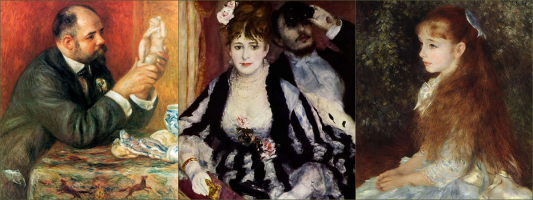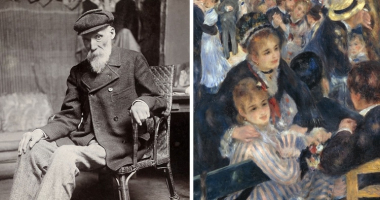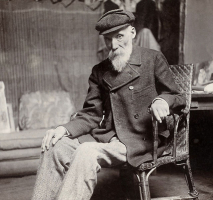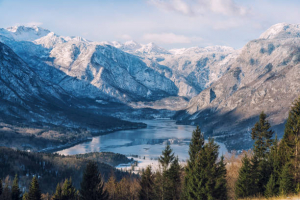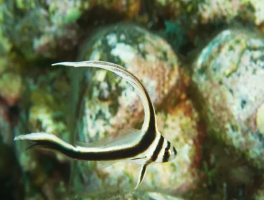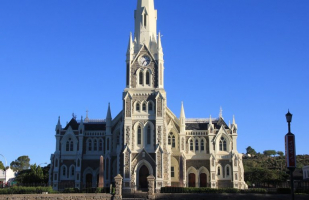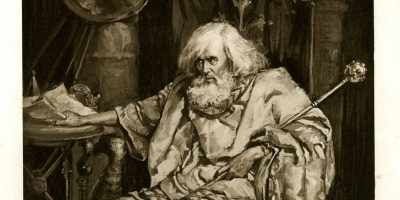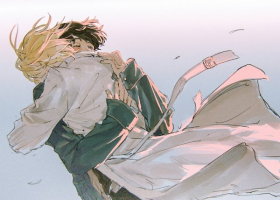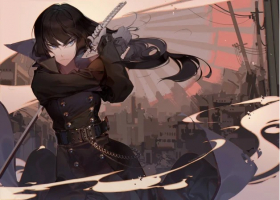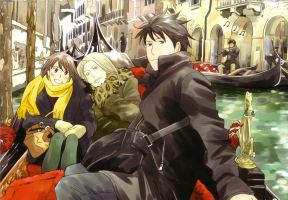Top 7 Beautiful Landscapes By Pierre-Auguste Renoir
Out of the five genres of western art, landscape was ranked fourth in terms of importance. However, a number of Impressionist painters focused on studying and ... read more...painting the landscape for the majority of their careers. Since that time, the landscape has emerged as a central motif in western art. Throughout his career, Pierre-Auguste Renoir (February 25, 1841 – December 3, 1919) experimented with landscape painting. He began by directly observing nature to produce works that were representations of nature in a naturalistic style. The first painting on our list demonstrates this. Renoir, who helped found Impressionism in the late 1860s, executed some of his most daring experiments with light, color, form, and brushwork in landscape paintings. He also began working in plein-air (“open air”), the practice of painting outdoors to capture the effects of light and atmosphere. Renoir’s style changed in the 1880s but he continued to create landscapes and push the boundaries of the genre. Here are 7 beautiful landscape paintings by Pierre-Auguste Renoir including his Impressionist masterpieces in the genre.
-
Jules Le Coeur in the Forest of Fontainebleau, an 1866 oil painting on canvas by French impressionist painter Pierre-Auguste Renoir (1841-1919). In their early careers as artists, Renoir and his pals frequently traveled to the Fontainebleau forest outside of Paris to paint outdoors (en plein air). Le Coeur was another painter, and he owned a house nearby at Marlotte. Brazil's Museum of Assis Chateaubriand, Campina Grande
The Fontainebleau forest was a well-liked destination for recreation at the time this work was produced. With its thick greenery and hillocks covered with rocks, the forest became a popular subject for painters and photographers. Renoir painted several works depicting the forest among which this is the best known. It depicts his friend Jules Le Coeur as he climbs a grass-covered path in the dense forest. The painting was created by Renoir before his Impressionist period and has been executed in the Realism style.
Location: Assis Chateaubriand Art Museum (MAC), Campina Grande, Brazil
French Title: Le peintre Jules Le Coeur et ses chiens dans la forêt de Fontainebleau
Year: 1866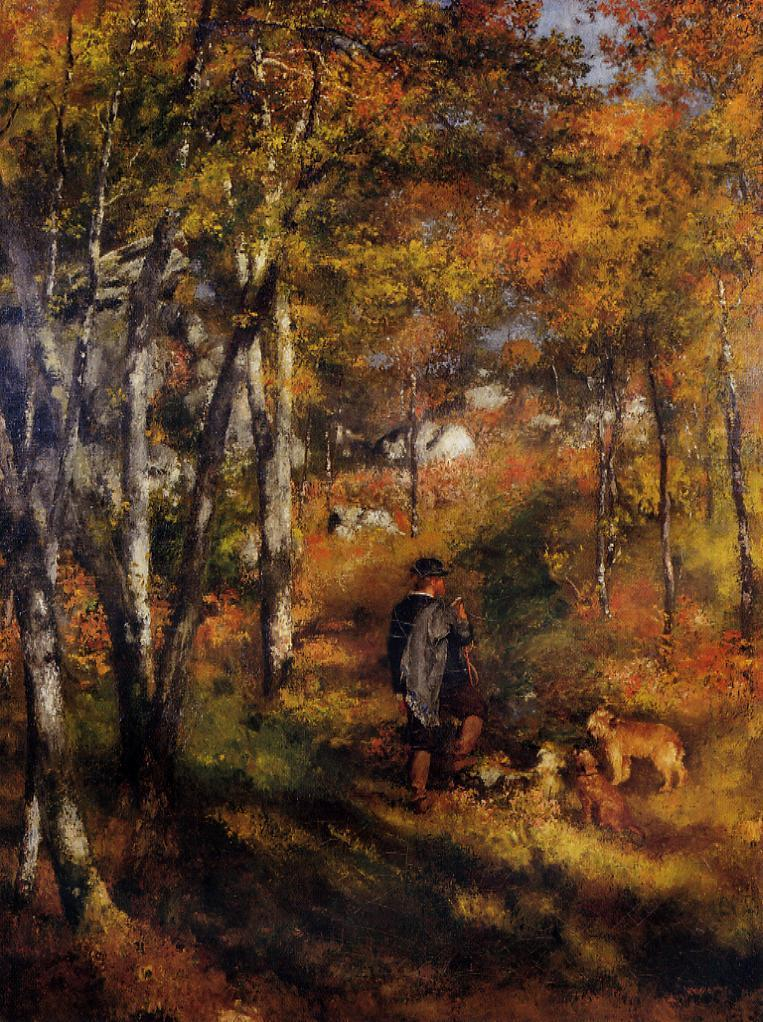
Source: wikiart.org 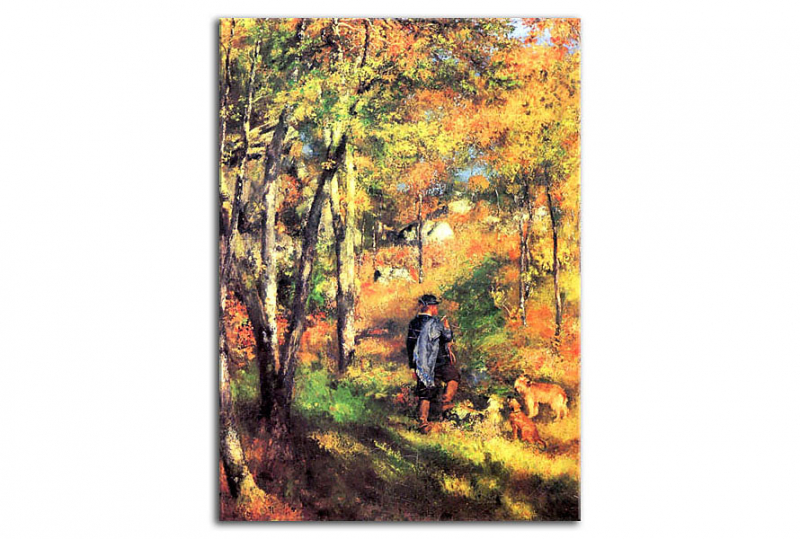
Source: tuttartpitturasculturapoesiamusica.com -
In the summer of 1873, Claude Monet and Renoir both painted. The two artists had previously worked together and would do so repeatedly in the future. Renoir and Monet each finished a landscape over a single summer excursion. To highlight the distinctions between the two artists, their works are frequently compared. One of those three works of art is The Duck Pond. Although the setting depicted in the painting is still unclear, it was most likely located in the area around Argenteuil, where Monet resided.
Impressionist-style artwork The Duck Pond was created in 1873 by renowned French artist Pierre-Auguste Renoir. The Dallas Museum of Art in Dallas, Texas, is where you may find this piece. The picture depicts a large pond with ducks, and a large house with a chimney can be seen in the background. This picture creates a sense of predetermination of events: an autumn breeze blows, leaves fall into a pond, nature is preparing for winter.
Location: Dallas Museum of Art, Texas, United States
French Title: L’étang de Canard
Year: 1873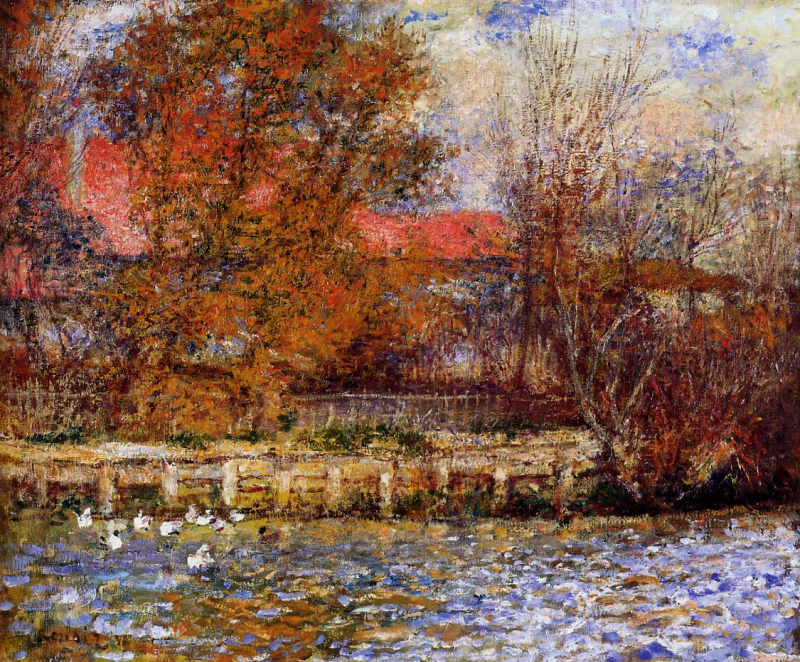
Source: wikiart.org 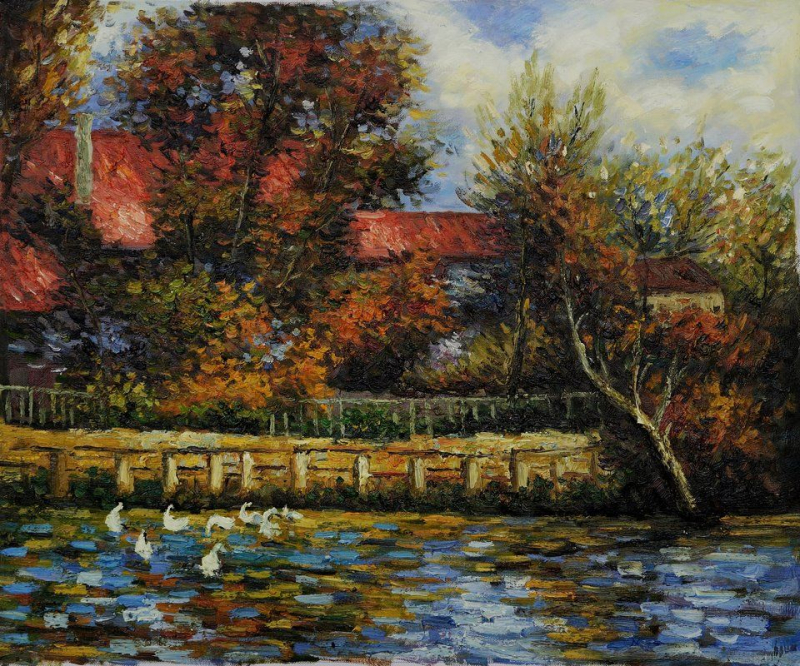
Source: Pinterest -
Several of the elements associated with Impressionism, such as fashionable women and boats, may be seen in this artwork. Similar to the topic selection, Renoir's use of color and painting style are hallmarks of the Impressionist movement. The orange of the boat and the blue of the water make for a striking contrast in the artwork. Renoir uses a complex network of strokes that are sharp in the foreground but softer for the trees in the background to portray the shimmering dance of light. Renoir is most likely seen gazing at the Seine River near Chatou in the scene, though this cannot be said with absolute confidence.
It is characteristic of the imagery that has come to define Impressionism, and Renoir includes several well-known Impressionist elements in this bright scene on the Seine, including stylish people, a rowing boat, a sailboat, and a steam locomotive crossing a bridge. Although the precise location is unknown, we are likely looking at the river at Chatou, which was a well-liked spot for recreational boating and is located about ten miles west of center Paris.
In the same way that Renoir's subject matter is distinctly Impressionist, so is his style of painting. By avoiding black and earth tones and utilizing brilliant unmixed paint straight from the tube, he conveys the feeling of summer heat and light.
In placing the bright orange boat against the dark blue water, Renoir has deliberately used complementary colors, which become more intense when seen alongside each other.
Location: The National Gallery, London, England
French Title: La Yole
Year: 1875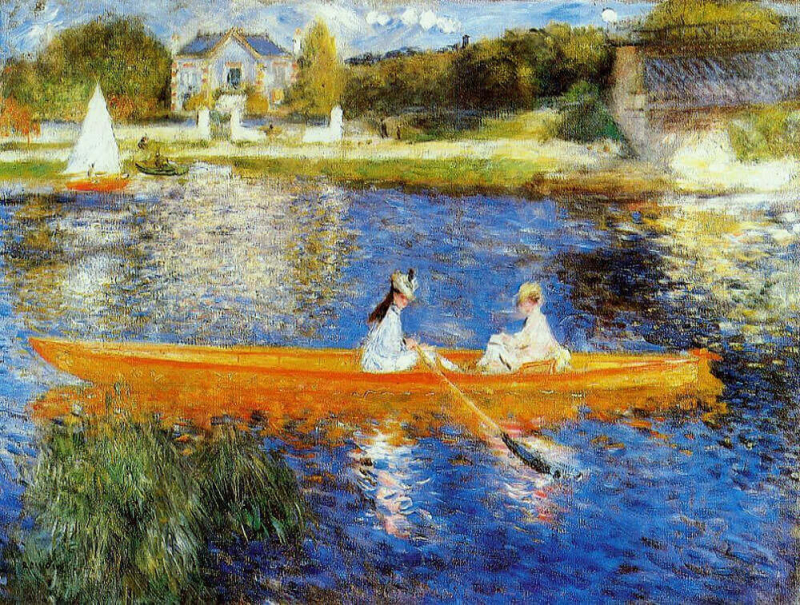
Source: renoir.net 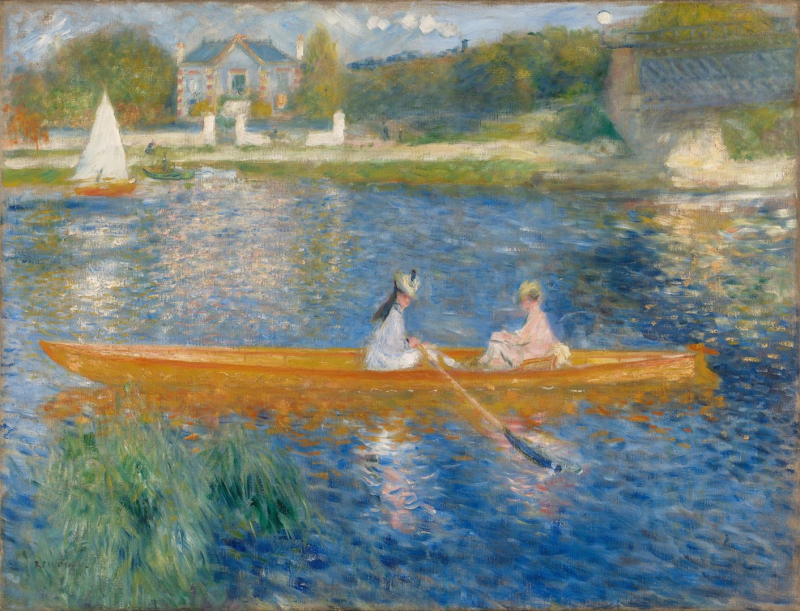
Source: National Gallery -
This picture, which Renoir made in the yard of his new studio in Montmartre at the height of his Impressionist movement. The picture, also known as Summer Landscape, shows a woman holding an umbrella and her spouse stooping to pick up a flower. The canvas's tenor, subjects, and visual vocabulary are all totally impressionistic. Tiny dots of color are used to make the flowers and shrubs as the forms blend together. The people stand out thanks to their dark apparel, which blends well with the nearby dark forest.
In Woman with a Parasol in a Garden, Renoir uses entirely impressionistic language. The two little figures are surrounded by flowers and shrubs that are produced with minute dots of color, creating a continuous intertwining of textures. The man leans down, maybe to pick up a flower, while the woman, whose parasol shields her from the sun, stands close by, suggesting a personal relationship.
Contrary to popular belief, Renoir created this canvas in the yard of his new studio in Montmartre, not in the countryside. George Rivière, a friend of Renoir's, recalled: "Renoir was enchanted by the vista of this garden, which appeared like a lovely abandoned park, as soon as he approached the house.
Location: The Thyssen, Madrid, Spain
French Title: Femme Avec Parasol Dans un Jardin
Year: 1875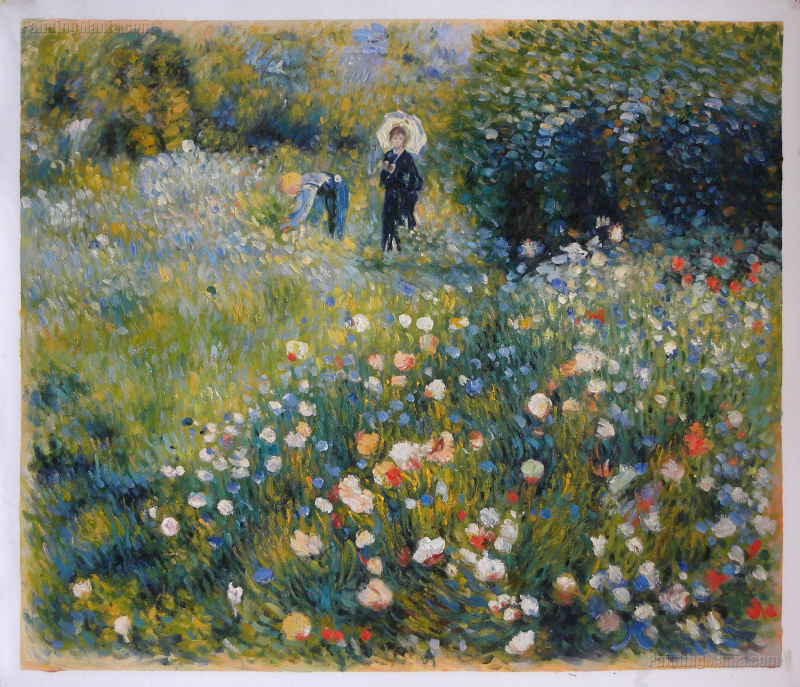
Source: paintingmania.com 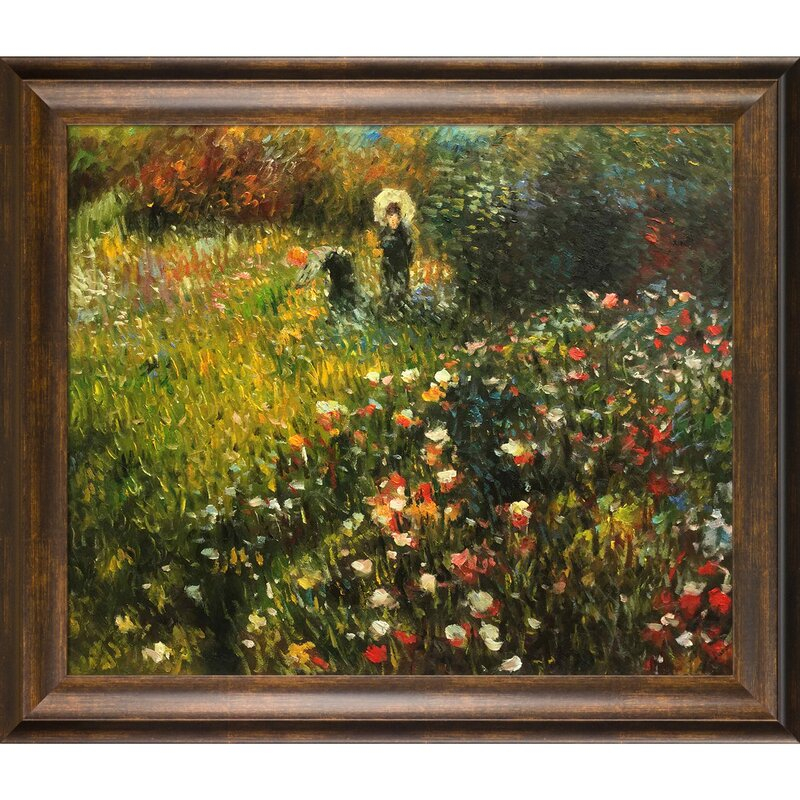
Source: tuttartpitturasculturapoesiamusica.com -
Renoir traveled to the British island of Guernsey in the summer of 1883. About fifteen paintings of the Moulin Huet beach and bay, on the rocky southern edge of the island, were created by Renoir while he was there. The most well-known of these is probably Fog on Guernsey. The landscape is hazy, particularly the background. This demonstrates his Impressionist style while also capturing the fog's effect. Guernsey's fog is sometimes compared to Monet's 1882 painting "Fisherman's Cottage on the Cliffs at Varangéville." Although the composition of the paintings is similar, Renoir's approach can be seen in Fog on Guernsey's color scheme and paint application.
The painting "Fog on Guernsey" demonstrates Pierre-Auguste Renoir's technique and subject matter in uncharted terrain. Renoir spent a brief period of time in the late summer of 1883 on the British island of Guernsey, when he created about fifteen paintings of the region around Moulin Huet Bay. Renoir spent a lot of time on "Fog on Guernsey" throughout this time. Here, the foreground's energetic, densely layered brushstrokes give way to the far bank's more supple lines. Renoir achieved this by mimicking the concealing qualities of morning fog. The temporary and the permanent, the effervescence of the atmosphere and the firmness of the landscape, were thus reconciled by the artist.
Renoir constantly sought to internalize and reinterpret the work of his Impressionist colleagues. "Fog on Guernsey" may be a nod to Claude Monet’s "Fisherman’s Cottage on the Cliffs at Varangéville" of 1882, in the collection of the Museum of Fine Arts, Boston. Though the compositions of the two paintings are certainly similar, the color palette and the way in which paint is applied in "Fog on Guernsey" make it very much an example of Renoir’s particular style.Location: Cincinnati Art Museum, Ohio, United States
French Title: Brouillard à GuernseyYear: 1883
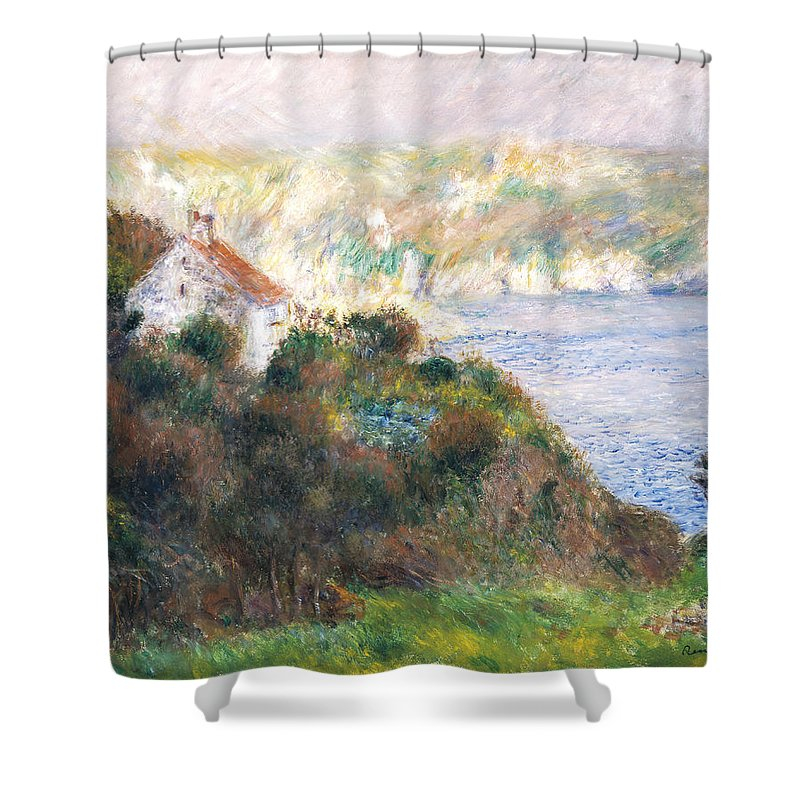
Source: fineartamerica.com 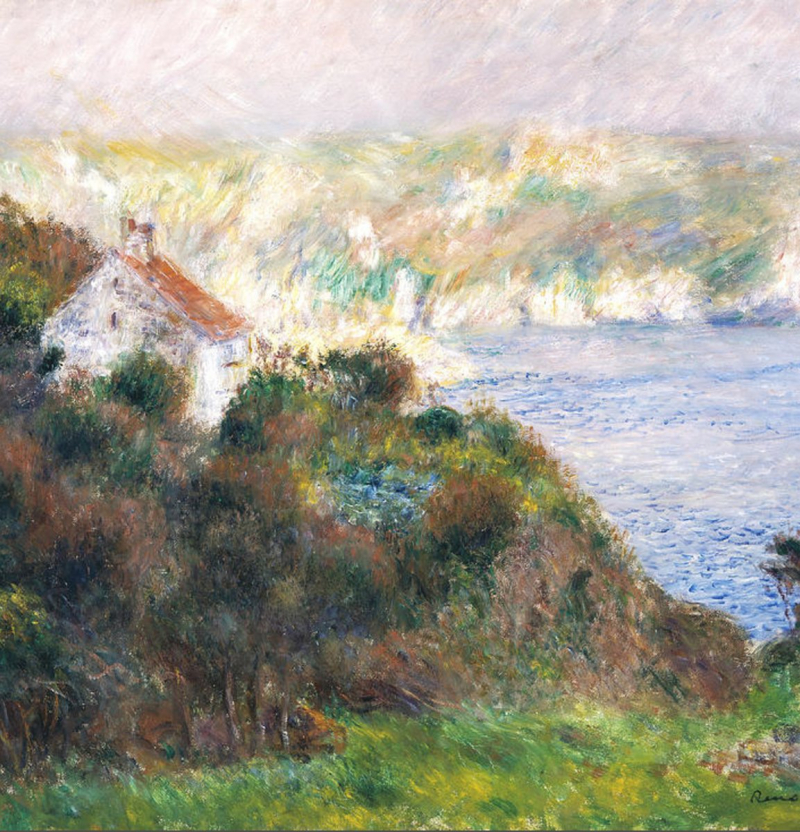
Source: tuttartpitturasculturapoesiamusica.com -
The landscape in this picture is in the vicinity of Annecy, a town next to a sizable lake in the Haute-Savoie region of France, however its precise position is unknown. Renoir has employed a bold color scheme in the piece, contrasting the vivid greens with contrasting shades of red, in keeping with his landscape paintings. To give the impression that the spectator is staring deeper into the image, the artist has used blurring. Renoir's use of brief, strong brushstrokes to describe the trees and vegetation in the right background is an indication of Paul Cezanne's influence.
According to a description on the back of the painting, this scene is a landscape close to Annecy, a historic French town situated next to a sizable lake in the Haute-Savoie area. However, the precise location has not been determined. Renoir has utilized vibrant color combinations, as was customary in his landscape paintings, to bring out the vitality and intensity of the colors. The vibrant greens were countered by contrasting red hues (pinks, ochre, and rusts). In this instance, he also appears to be reflecting the visual phenomena that we encounter when gazing into the distance. As our eyes go beyond them, objects that are close to us or in our peripheral vision—in this case, the grasses and the vegetation on either side of the foreground—fall out of focus. Instead of painting what is closer to the viewer in more detail, Renoir has used broad dabs of the brush to create an impression of blurring, tricking the eye into looking deeper into the picture.
Location: The National Gallery, London, England
French Title: Paysage au Bord du Lac
Year: 1889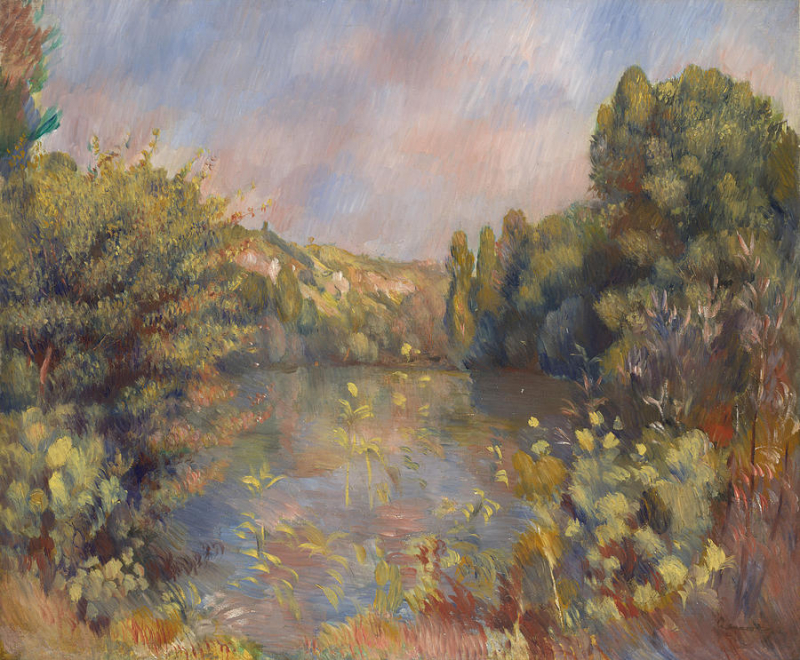
Source: Fine Art America 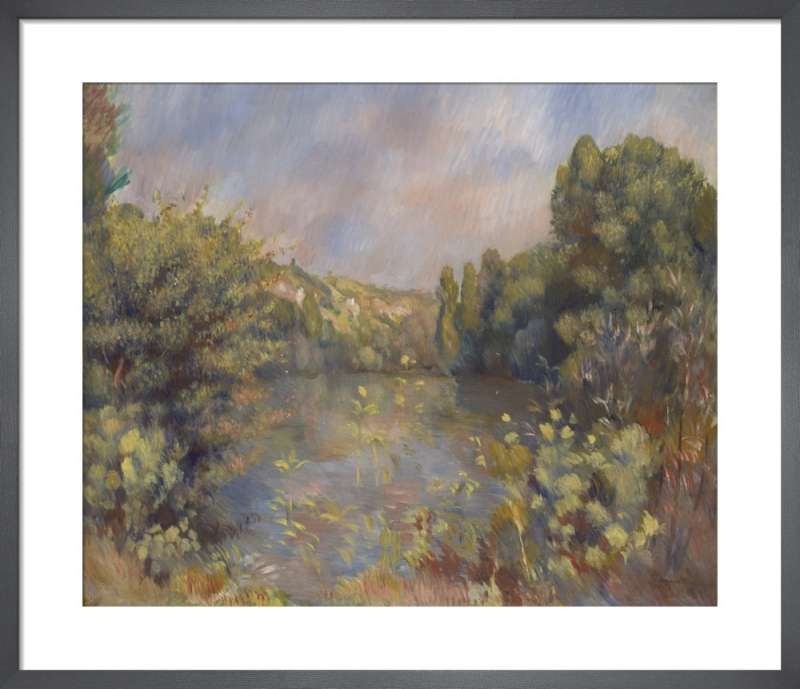
Source: King and McGaw -
Renoir relocated to the farm at Cagnes-sur-Mer on the French Mediterranean coast in 1908. The lovely farmhouse, its orchards of orange and olive trees, and the vistas it provided of the mountainous terrain were depicted in a number of works by the artist. There are numerous paintings that depict the farmhouse encircled by olive trees. It should be emphasized that the image depicts the original farmhouse rather than Renoir's residence, which was built by an architect. One of the best examples of the artist's later landscapes is The Farm at Les Collettes.
Early 20th-century oil on canvas painting by French artist Pierre-Auguste Renoir, The Farm at Les Collettes, Cagnes. The Metropolitan Museum of Art owns the piece of art. The farm in Cagnes-sur-Mer, on the southern French Mediterranean coast, is shown in the painting. Renoir was compelled to relocate there in 1908 to assist with the symptoms of his rheumatoid arthritis. Renoir really resided in a newly constructed house on the estate, despite the fact that the original farmhouse is represented in the painting.
A skilled artist at our company has meticulously hand-painted The Farm at Les Collettes, Cagnes by Pierre-Auguste Renoir on canvas. We utilize only the finest oil paints and high quality artist-grade canvas to ensure the most vivid color. Our artists start with a blank canvas and paint each and every brushstroke by hand to re-create all the beauty and details found in the original work of art. If you select one of our handcrafted frames for your oil painting, it will arrive to your door, ready to hang with all hanging accessories included.
Location: Metropolitan Museum of Art, New York City, USA
French Title: La Ferme des CollettesYear: 1914
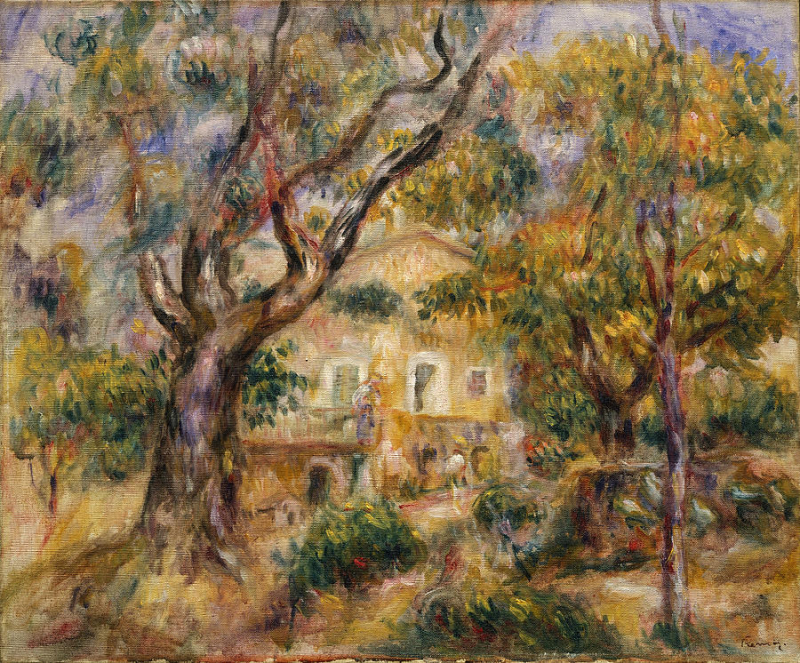
Source: Fine Art America 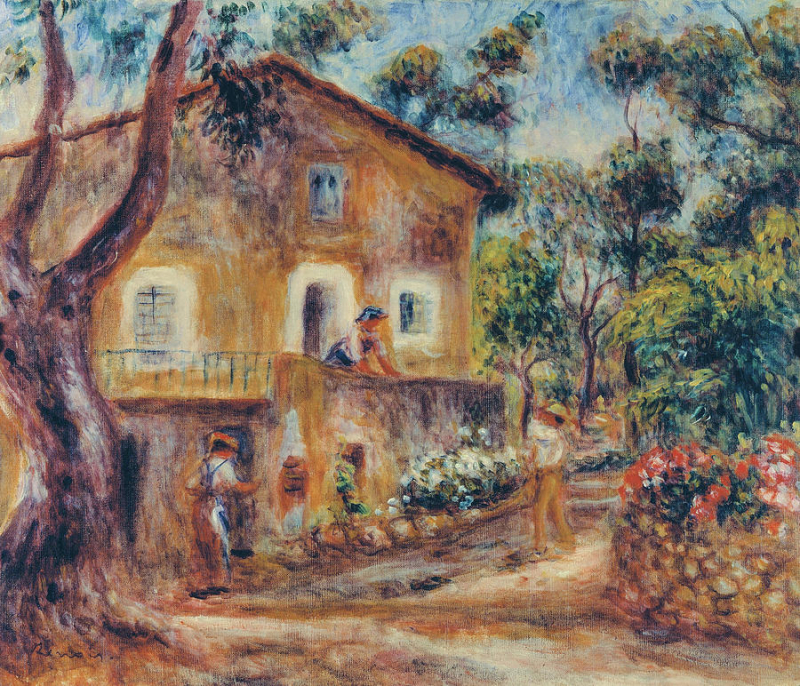
Source: Fine Art America









